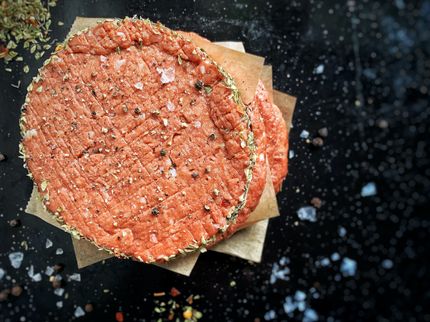Researchers develop ‘vegan meat’ based on sunflower flour
Researchers from the Institute of Food Technology (ITAL) and the University of Campinas (UNICAMP), both in the state of São Paulo, Brazil, in collaboration with scientists from the Fraunhofer IVV Institute in Germany, have developed a food product made from sunflower flour that can be used as a meat substitute.

Researchers enriched the product with tomato powder, spices, and a mixture of fat sources made up of sunflower, olive, and linseed oils
Unicamp
The ingredient is obtained by extracting oil from the seeds of the plant. In order for it to be consumed by humans, the husks and phenolic compounds from the grains must be removed before processing. These substances give the flour a dark color and reduce its digestibility.
The next step was to prepare two formulations of meat alternatives. The first incorporated flour from roasted grains, and the second used textured sunflower protein. Both were enriched with tomato powder, spices, and a mixture of sunflower, olive, and linseed oils.
The patties were shaped into mini-burgers and baked. They then underwent sensory and physicochemical evaluations. The analysis results showed that the textured protein version had superior consistency, as well as high levels of protein and health-boosting fats, such as monounsaturated fatty acids. Additionally, the textured protein option had a significant mineral content, particularly of iron, zinc, magnesium, and manganese at 49%, 68%, 95%, and 89% of the recommended daily intake, respectively.
The authors of the study, supported by FAPESP, decided to study sunflower meal because sunflower oil is widely used in Europe and sunflower cultivation is expanding in Brazil. Another advantage of the ingredient is that it is not genetically modified.
Additionally, the plant’s flour is a promising source of protein, which is highly relevant given the growing consumer demand for sustainable, plant-based options.
Maria Teresa Bertoldo Pacheco, a researcher at ITAL’s Center for Food Science and Quality and the last author of an article on the research published in the journal Food Research International, says, “It should also be noted that, after removing the husks and phenolic compounds, the flour has a very neutral taste and aroma, especially compared to the various vegetable proteins on the market.”
Pacheco also points out that the product has a favorable composition of essential amino acids. This is another factor that could lead to its incorporation into the food industry as a meat product substitute from a nutritional point of view. “From a functional-technological standpoint, processes that build fibrous proteins, such as extrusion, are needed to deliver a product with a more meat-like appearance and texture,” says Pacheco.
“I think the study provided a lot of positive references, both for making full use of the cultivar and for encouraging the consumption and appreciation of the flour. The partnership with German researchers was also very important, thanks to the sharing of working techniques, the exchange of knowledge, and the exchange of students and researchers,” she adds.
Original publication
Tiago Negrão Andrade, Clara Takayama Arbach, Aline de Oliveira Garcia, Laricia Domingues, Tainá Vieira Marinho, Elizabeth Nabeshima, Bruna Fernanda Damasceno Ramirez, Maria Teresa Bertoldo Pacheco; "Exploring new plant-based products: Acceptance of sunflower meal as a protein source in meat alternative products"; Food Research International, Volume 209
Most read news
Original publication
Tiago Negrão Andrade, Clara Takayama Arbach, Aline de Oliveira Garcia, Laricia Domingues, Tainá Vieira Marinho, Elizabeth Nabeshima, Bruna Fernanda Damasceno Ramirez, Maria Teresa Bertoldo Pacheco; "Exploring new plant-based products: Acceptance of sunflower meal as a protein source in meat alternative products"; Food Research International, Volume 209
Topics
Organizations
Other news from the department science

Get the food & beverage industry in your inbox
By submitting this form you agree that LUMITOS AG will send you the newsletter(s) selected above by email. Your data will not be passed on to third parties. Your data will be stored and processed in accordance with our data protection regulations. LUMITOS may contact you by email for the purpose of advertising or market and opinion surveys. You can revoke your consent at any time without giving reasons to LUMITOS AG, Ernst-Augustin-Str. 2, 12489 Berlin, Germany or by e-mail at revoke@lumitos.com with effect for the future. In addition, each email contains a link to unsubscribe from the corresponding newsletter.
































































